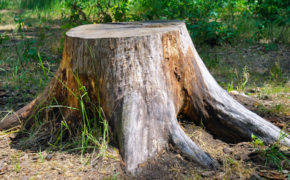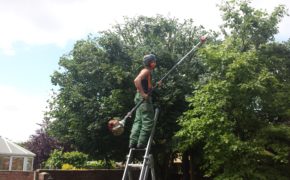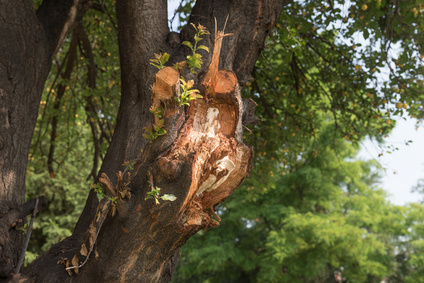
Get a quick no obligation quote It’s free and will only take a jiffy!
How to Treat and Prevent Tree Wounds
Spending their entire lives outdoors amongst wildlife and amidst the great British weather system, it is no surprise that trees are wounded fairly regularly. From animals gnawing at the bark to insect attack; from fire and storm damage to impacts, abrasions and scrapes through to pruning, trees really do come up against it during their lifetimes.
Tree wounds are classed as anything that breaks the bark and damages the tissues that are responsible for transporting food and water to where they are needed.
When a tree is wounded, the tree automatically goes into natural protection mode. On the outside, it will grow new wood and bark around the wounded area so that a callus is formed. On the inside, the tree starts processes that will prevent decay.
Pruning and tree wounds
Every time a tree is pruned, a wound is inflicted upon it. The size, angle and position of the pruning cut will affect the ability of the tree to stand up to the wound and continue to grow healthily.
Good pruning methods are a much better approach than dealing with large wounds after the event. Prune using the right procedure, at the right time. Have a browse of our news pages to learn how and when to prune your particular tree.
As a general rule, branches should be removed at their point of attachment. Alternatively, they should be shortened down to a lateral branch at a minimum of one third of the diameter of the removed part of the branch. Any ragged ended damaged limbs should be cut below the point of injury.
All cuts should be kept as small as possible. Straight cuts leave smaller wounds than angled cuts, and the smaller the wound, the more likely it will be to form a protective callus quickly.
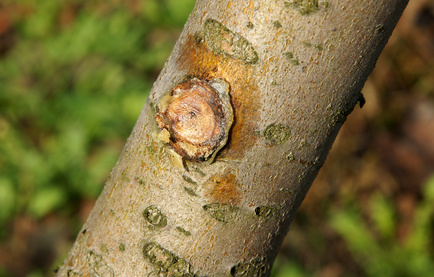
If your tree has been wounded, you will naturally want to help along its healing process. Let’s take a look at how to treat – and prevent – tree wounds.
How to treat tree wounds
When a tree has sustained a wound or has been pruned, many people have the knee jerk reaction to apply a wound dressing. The trouble is that the disadvantages of this course of action tend to outweigh the advantages.
Wound dressings like paint, tar or any petroleum based solvents can actually prevent the tree from forming a callus. Without the callus, the tree won’t have its protective barrier. What’s more, moisture, bacteria and fungi can get under the dressing. Once that’s sealed in, decay can occur. If you are looking to make the tree look better from a cosmetic standpoint, you could apply a very thin coating of an aerosol based wound dressing. But do be aware that this is just for appearance purposes; there will be no health benefit to the tree.
It can be tempting to ‘seal off’ a wound with a wound dressing. Instead, have confidence in the ability of your tree to do this for itself. Just like your skin naturally forms a scab when cut without any help, so the tree forms the callus it needs to protect itself from disease.
There are some particularly devastating tree diseases, such as oak wilt, that are caused by insects feeding off the sap produced by pruning cuts and then spreading to other trees via the roots. Wound dressings may reduce, but certainly won’t eliminate, the risk of such infections. If diseases are a particular issue in your area then it may be better to use a wound dressing than not to use one. However, before you proceed, you should talk to a qualified tree surgeon to ascertain the best course of action. If there is an effective alternative to wound paint then that will always be preferable.
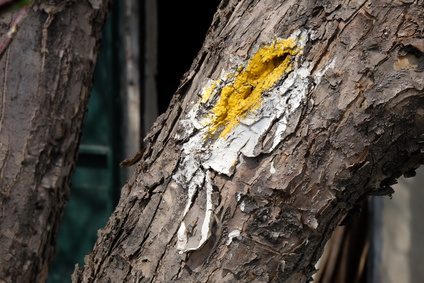
Other tree wound treatments include:
Scribing any loose bark away from around the wound
Again this is more a cosmetic treatment, but it can encourage the healing process, reduce rot and encourage the callus to form. It must be done incredibly carefully though. One wrong move and you could increase the size of the wound.
Boosting the health of the tree
When a tree has been injured, especially if the injury is to the trunk, it is important to take steps to improve its health generally. Pruning using appropriate method at the correct time will increase air flow. You should also look to remove any deadwood. Be sure to get rid of this wood, and any pruned branches, so that any disease or pest infestations do not find their way back to the tree and attack the wound. If there are other trees nearby that could be removed, do so as this will boost available nourishment for the wounded tree whilst it is healing. Lastly, be sure to water the tree regularly during dry spells, and use an appropriate feed.
How to prevent tree wounds
Prevention is by far the best cure when it comes to tree wounds. Here are our top tips to follow to prevent tree wounds occurring in the first place:
- Prune using the correct methods at the correct time of year (see above) and, if ever in doubt, always consult a qualified tree surgeon
- Always sterilise your pruning instruments between cuts using alcohol or hydrogen peroxide
- Take care when mowing or strimming around a tree
- Encase the lower trunks of younger trees to prevent damage by animals
- Keep your tree well pruned and remove deadwood regularly so that it is not prone to storm damage
Need help treating a tree wound?
If your valued tree has been injured and you are unsure how best to treat it, talk to the experts at TH Trees Ltd. We have over 15 years’ experience in all aspects of tree surgery, numerous qualifications and Trading Standards and local authority approval. We will assess your tree and advise you on the most appropriate treatment for the fastest possible healing time.
Amazing service from Mark and his team. We had a problem with Bamboo that had spread from a neighbours garden. Mark kept us informed with regular phone calls and images of how the work was progressing, as we were not present the house. 1st class job and a pleasure to do business with this company.
Thank you Colin and Gillian for your kind review. It was a pleasure to be able to clear the bamboo for you.

